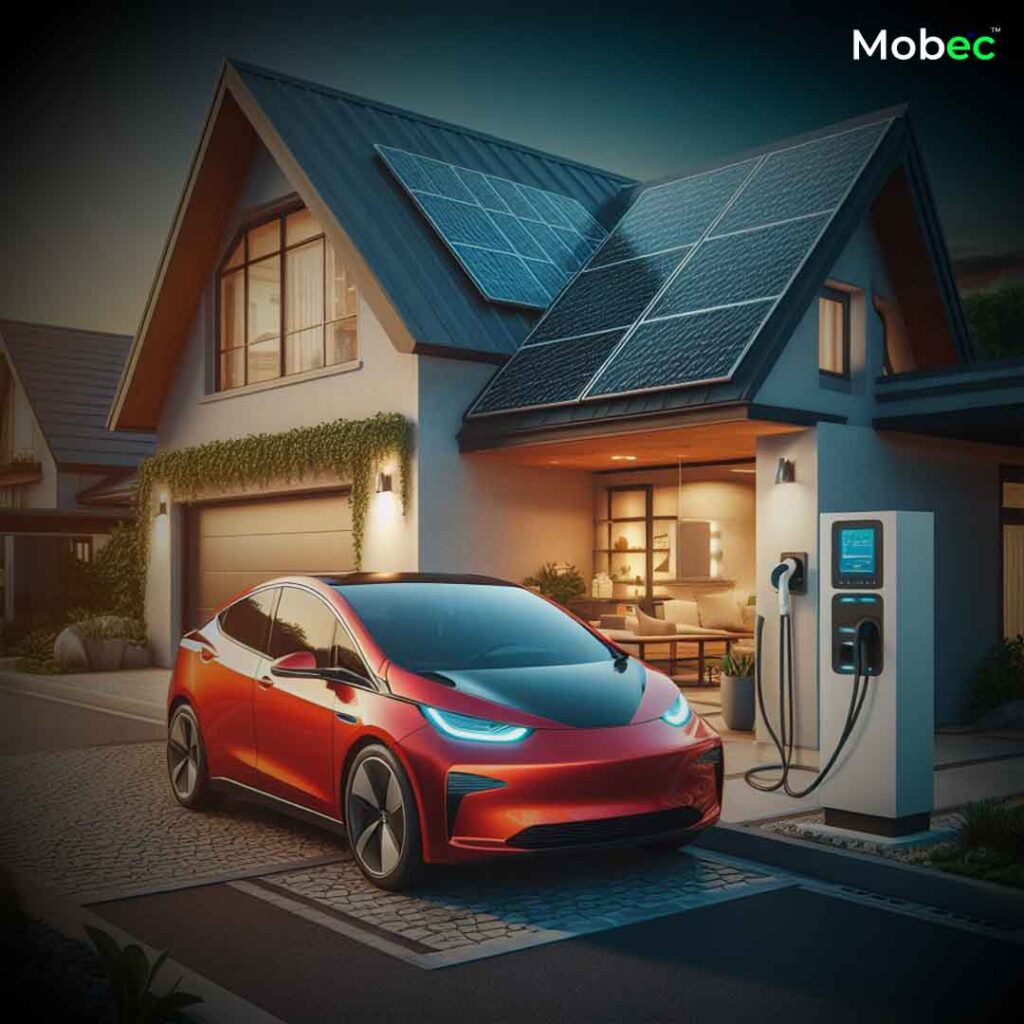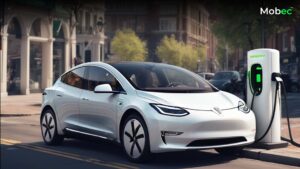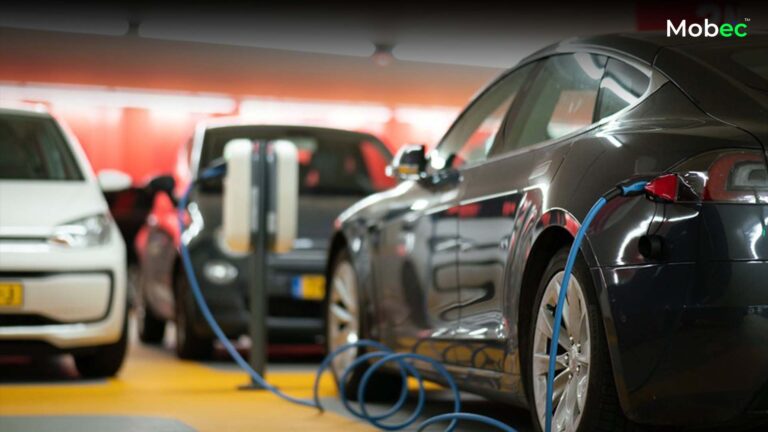The rapid growth of electric vehicles (EVs) is transforming the way we think about transportation, offering a sustainable and eco-friendly alternative to traditional internal combustion engine vehicles. Central to the success of EVs is the infrastructure that supports them, particularly charging stations. As the number of EVs on the road continues to increase, effectively utilizing charging stations becomes crucial for maximizing the benefits of electric mobility. In this comprehensive guide, we’ll explore tips for utilizing charging stations effectively for EVs, ensuring a seamless and efficient charging experience for electric car owners.
Planning Ahead for Charging Needs:

A. Understand Your Vehicle’s Range:
To utilize charging stations effectively, it’s essential to have a good understanding of your electric vehicle’s range. Knowing how far your EV can travel on a full charge helps you plan your journeys, assess potential charging stops, and avoid the anxiety associated with running out of battery power.
- Refer to Your Vehicle’s Manual:
Each electric vehicle model has its own specifications regarding range, charging times, and optimal charging practices. Refer to your vehicle’s manual or consult the manufacturer’s guidelines to get accurate information about your EV’s capabilities.
- Utilize Range Estimation Tools:
Many electric vehicles come equipped with onboard range estimation tools that provide real-time information about the remaining range based on driving conditions and battery status. Use these tools to plan your trips and identify suitable charging points along your route.
B. Plan Charging Stops in Advance:
When embarking on a journey, plan your charging stops in advance, especially for longer trips. Use online tools and mobile apps that provide maps of charging station locations, along with real-time availability and charging speed information.
- Consider Charging Station Densities:
Take into account the density of charging stations along your route. Opt for routes with a higher concentration of charging stations to ensure flexibility and reduce the risk of encountering congestion or unavailable charging points.
- Look for Fast-Charging Stations:
For longer journeys, prioritize routes that have fast-charging stations. These stations significantly reduce charging times, allowing you to spend less time waiting and more time on the road.
Efficient Utilization of Charging Stations:

A. Familiarize Yourself with Charging Connectors:
Charging stations support different types of connectors, depending on the charging standard and the manufacturer. Familiarize yourself with the connector type your EV uses and ensure you have the necessary cables or adapters for various charging stations.
- CHAdeMO, CCS, and Tesla Connectors:
Major charging standards include CHAdeMO, CCS (Combined Charging System), and Tesla connectors. Know which standard your EV follows and understand the compatibility of charging stations with your vehicle’s connector type.
- Carry Adapters and Cables:
To be prepared for various charging scenarios, carry appropriate adapters and cables. Some charging stations may have different connector types, and having the right accessories ensures you can connect to any available station.
B. Optimize Charging Times:
Efficient utilization of charging stations involves optimizing the time spent charging. Follow these tips to make the most of your charging sessions:
- Charge During Activities:
Whenever possible, plan charging stops during activities like meals, shopping, or other engagements. This allows you to multitask and utilize the time effectively while your vehicle charges.
- Avoid Frequent Partial Charging:
For optimal battery health, try to avoid frequent partial charging. Instead, aim for fewer but deeper charging sessions. Charging from a lower state of charge to a higher one is generally more efficient.
Maximizing the Benefits of Home Charging:

A. Invest in a Home Charging Station:
For daily charging needs, consider investing in a home charging station, also known as an electric vehicle supply equipment (EVSE). Home charging provides the convenience of starting each day with a fully charged battery.
- Level 2 Charging:
Home charging stations typically operate on Level 2 charging, which uses a 240-volt power source. This provides faster charging compared to a standard household outlet, allowing you to replenish your EV’s battery overnight.
- Smart Home Charging Solutions:
Explore smart home charging solutions that offer additional features, such as remote monitoring, energy management, and scheduling. Smart charging allows you to take advantage of off-peak electricity rates, optimizing both cost and energy efficiency.
B. Charge Overnight:
To make the most of your home charging station, get into the habit of charging your EV overnight. This ensures your vehicle starts each day with a full battery, providing ample range for daily commuting and unexpected trips.
- Take Advantage of Off-Peak Rates:
If your utility offers off-peak electricity rates, schedule your charging sessions during these times to save on electricity costs. Many smart home charging solutions allow you to program charging times for maximum efficiency.
- Monitor Charging Times:
Monitor your vehicle’s charging times and adjust your schedule based on your daily activities. This helps you maintain a consistent charging routine and ensures your EV is ready when you need it.
Embracing Workplace Charging:
A. Utilize Workplace Charging Stations:
If your workplace offers charging stations, take advantage of this convenient charging option. Workplace charging allows you to replenish your EV’s battery while you’re at work, reducing the need for additional charging stops during your commute.
- Check Workplace Charging Policies:
Be aware of any workplace charging policies, such as time limits or reservation systems. Familiarize yourself with the rules to ensure fair access for all employees who utilize the charging stations.
- Encourage Workplace Charging Programs:
If your workplace doesn’t currently offer charging stations, consider advocating for the implementation of workplace charging programs. Highlight the benefits, such as employee satisfaction, retention, and the promotion of sustainable practices.
B. Promote Charging Etiquette:
In workplaces where charging stations are shared among employees, promote charging etiquette to ensure fair access. Encourage users to unplug their vehicles promptly after charging is complete to allow others to utilize the stations.
- Communicate Charging Policies:
Clearly communicate workplace charging policies to all employees. This includes guidelines on charging durations, etiquette, and any fees associated with the use of workplace charging stations.
- Consider Shared Scheduling:
In workplaces with limited charging stations, explore the possibility of implementing shared scheduling systems. This ensures that all employees have equitable access to charging infrastructure.
Environmental Considerations and Sustainable Charging:
A. Integrate Renewable Energy:
Maximize the environmental benefits of charging your EV by utilizing charging stations powered by renewable energy sources. Some charging stations incorporate solar panels or wind turbines, contributing to a greener and more sustainable charging infrastructure.
- Choose Green Energy Providers:
When possible, choose charging stations that source their electricity from green energy providers. These providers prioritize renewable energy sources, aligning with the eco-friendly goals of electric vehicle owners.
- Explore Off-Grid Charging Solutions:
Off-grid charging solutions, such as solar-powered charging hubs with energy storage, offer a sustainable alternative in areas without access to traditional electricity grids. These solutions contribute to reducing reliance on non-renewable energy sources.
Monitor and Minimize Energy Consumption:
Efficient utilization of charging stations includes monitoring and minimizing energy consumption during charging sessions. Consider the following practices:
- Optimize Charging Speeds:
While fast-charging stations offer quick replenishment of battery power, they may consume more energy. Evaluate your charging needs and use fast-charging selectively, opting for slower charging when time permits.
- Use Energy-Efficient Charging Modes:
Some electric vehicles allow you to choose different charging modes that affect the speed of charging and energy consumption. Explore the available modes and select the one that aligns with your charging requirements.
Leveraging Technology for a Seamless Experience:
A. Utilize Mobile Apps:
Mobile apps dedicated to electric vehicle charging play a crucial role in optimizing the charging experience. Many charging networks have their own apps that provide real-time information about station locations, availability, and charging speeds.
- Plan Routes with Charging Apps:
Before embarking on a journey, use charging apps to plan your routes and identify charging stations along the way. These apps often provide essential details, such as station types, connector compatibility, and real-time availability.
- Receive Charging Notifications:
Enable notifications on charging apps to receive alerts when your charging session is complete or if any issues arise. This feature ensures you can promptly move your vehicle from the charging station, allowing others to use it.
B. Embrace RFID Cards and Membership Programs:
Many charging networks offer RFID cards and membership programs for seamless and hassle-free access to charging stations. These cards or memberships streamline the authentication and payment processes, making it more convenient for electric vehicle owners.
- Explore Multi-Network Memberships:
Consider memberships that provide access to multiple charging networks. Multi-network memberships offer flexibility and convenience, allowing you to use different charging stations without the need for multiple accounts.
- Monitor Charging Expenses:
Some charging apps provide detailed reports on your charging expenses. Monitor these reports to track your charging costs, optimize your charging habits, and make informed decisions about when and where to charge.
Conclusion:
Effectively utilizing charging stations for electric vehicles is essential for the continued growth and success of the electric mobility revolution. By understanding your vehicle’s range, planning charging stops in advance, optimizing charging times, and embracing technology, you can make the most of the existing charging infrastructure. Whether you’re charging at home, at the workplace, or on the go, these tips ensure a seamless and efficient experience, promoting the convenience and practicality of electric vehicle ownership. As the electric vehicle landscape continues to evolve, the effective utilization of charging stations will remain a critical factor in the widespread adoption of sustainable and eco-friendly transportation.




















[…] […]
[…] Ultra-fast chargers are rewriting this narrative, turning road trips into seamless adventures. With charging stations strategically located along highways, drivers can now refuel their EVs swiftly, eliminating the […]